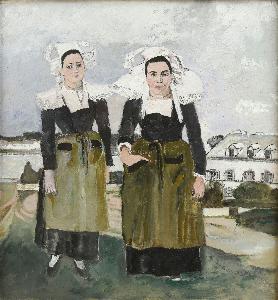Max Jacob
Max Jacob
สไตล์: Expressionism;
สถานที่: Quimper
เกิด: 1876
ความตาย: 1944
ชีวประวัติ:
Max Jacob (French: [maks ʒakɔb]; 12 July 1876 – 5 March 1944) was a French poet, painter, writer, and critic. He was born in Quimper, Brittany, France, and spent his childhood there. In 1897, he left the Paris Colonial School to pursue a career as an artist. Jacob was one of the first friends Pablo Picasso made in Paris, and they shared a room on the Boulevard Voltaire. Jacob introduced Picasso to Guillaume Apollinaire, who in turn introduced Picasso to Georges Braque. Jacob was also close friends with Jean Cocteau, Jean Hugo, Christopher Wood, and Amedeo Modigliani, who painted his portrait in 1916. He befriended and encouraged the artist Romanin, otherwise known as French politician and future Resistance leader Jean Moulin. Moulin's famous nom de guerre Max is presumed to be selected in honor of Jacob. Jacob, who was Jewish, claimed to have had a vision of Christ in 1909 and converted to Catholicism. He was hopeful that this conversion would alleviate his homosexual tendencies. Jacob is regarded as an important link between the symbolists and the surrealists, as can be seen in his prose poems Le cornet à dés (The Dice Box, 1917) and in his paintings, exhibitions of which were held in New York City in 1930 and 1938. His writings include the novel Saint Matorel (1911), the free verses Le laboratoire central (1921), and La défense de Tartuffe (1919), which expounds his philosophical and religious attitudes. The famous psychoanalyst Jacques Lacan attributed the quote 'The truth is always new' to Jacob.



